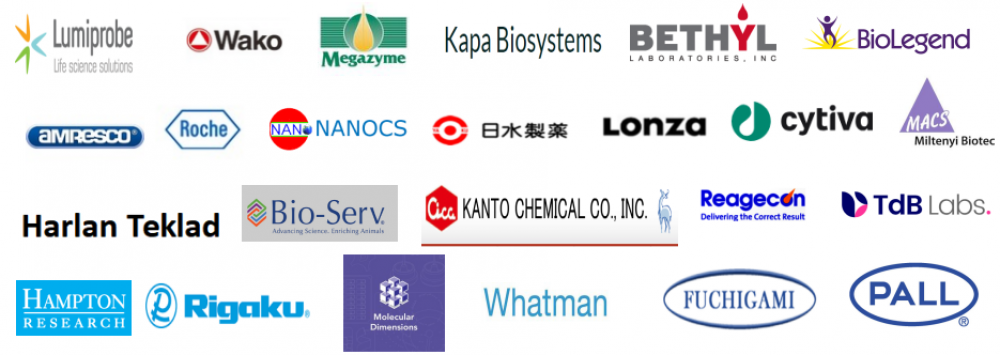Oxoid CM0755B GBS琼脂基础GBS AGAR BASE (ISLAM)
GBS AGAR BASE (ISLAM)
Code: CM0755
For the isolation and detection of Group B streptococci (GBS) in clinical specimens.
用于临床标本中B组链球菌(GBS)的分离和检测。
| Typical Formula* |
gm/litre |
| Proteose peptone |
23.0 |
| Soluble starch |
5.0 |
| Sodium dihydrogen phosphate |
1.5 |
| Di-sodium hydrogen phosphate |
5.75 |
| Agar |
10.0 |
| pH 7.5 ± 0.1 @ 25°C |
* Adjusted as required to meet performance standards
Directions
Suspend 45.2g in 1 litre of distilled water and bring to the boil to disolve completely. Sterilise by autoclaving at 121°C for 15 minutes. Cool to 50°C and aseptically add 50ml of sterile inactivated Horse Serum‡. Mix well and pour into Petri dishes.
‡ Sterile Inactivated Horse Serum
Hold sterile Horse Serum (Oxoid SR0035) at 56°C for 30 minutes.
Description
GBS Agar Base is based on the formulation described by Islam1. The medium is designed to exploit the ability of most group B streptococci (GBS) to produce orange/red pigmented colonies when incubated under anaerobic conditions.
Group B streptococci are a recognised cause of serious neonatal infection acquired from the infected mother. A review 2 of national data over an 8 year period by the Public Health Laboratory Service showed that group B streptococci accounted for 29.5% of all reports of neonatal bacterial meningitis with organisms being isolated from CSF and blood.
Group B streptococci may also be isolated from adults infected in a variety of sites.
The pigment of group B streptococci has characteristics of a carotenoid 3 and was first noted by Lancefield in 1934 in nine of twenty-four strains grown anaerobically. Modifications of media1,4,5 have improved the proportion of pigmented strains to about 97%. Noble et al.6 reported that in their studies 99.5% of beta-haemolytic GBS strains produced pigment. GBS Agar also supports growth of other genital bacteria that cause perinatal infections1, e.g. anaerobic streptococci, Bacteroides and Clostridium species.
Colonies of group B streptococci are 0.5-1mm in diameter, round, entire and pigmented orange/red after 24-48 hours anaerobic incubation. Other organisms able to grow on this medium do not produce the orange/red pigment.
de la Rosa et al.7 demonstrated the pigment-enhancing effect of trimethoprim/sulphonamides added to their medium. Work carried out in the Oxoid laboratories has shown that this pigment-enhancing effect can also be demonstrated around a sulphonamide disc placed on the inoculated plate. Standard discs of SF300 or SF500 can be used for this purpose. No inhibition of growth occurs and the enhanced pigment effect is clearly seen over a radius of 10-20mm.
Technique
1. Swabs should be collected into Stuart’s Transport Medium CM0111 and processed within 1/2-2 hours of collection8.
2. Inoculate the swab on to the surface of GBS Agar.
3. If desired, apply a disc containing 300 or 500 of Sulphafurazole on to an area of the plate where growth can be expected to be moderately profuse. These discs are available from Oxoid.
4. Incubate the plates anaerobically at 35°C for 24-48 hours.
5. Report all orange/red pigmented colonies as presumptive group B streptococci.
6. Identity can be confirmed using an Oxoid Streptococcal Grouping Kit DR0585 or Oxoid Dryspot Streptococcal Grouping Kit DR0400
Storage conditions and Shelf life
Store the dehydrated medium at 10-30°C and use before the expiry date on the label.
Store the prepared plates at 2-8°C away from light.
Appearance
Dehydrated medium: Straw coloured, free-flowing powder
Prepared medium: Straw coloured gel
方向
将 45.2g 悬浮在 1 升蒸馏水中并煮沸以完全溶解。通过在 121°C 高压灭菌 15 分钟进行灭菌。冷却至 50°C 并在无菌条件下加入 50ml 无菌灭活马血清‡。充分混合并倒入培养皿中。
‡ 无菌灭活马血清
将无菌马血清 (Oxoid SR0035) 在 56°C 下保持 30 分钟。
描述
GBS Agar Base 基于 Islam1 描述的配方。该培养基旨在利用大多数 B 组链球菌 (GBS) 在厌氧条件下培养时产生橙色/红色色素菌落的能力。
B 组链球菌是从受感染的母亲获得的严重新生儿感染的公认原因。公共卫生实验室服务对 8 年期间的国家数据进行的审查 2 显示,B 组链球菌占所有新生儿细菌性脑膜炎报告的 29.5%,其中生物体从脑脊液和血液中分离出来。
B 组链球菌也可以从不同部位感染的成年人中分离出来。
B 组链球菌的色素具有类胡萝卜素 3 的特征,Lancefield 于 1934 年首次在 24 种厌氧生长菌株中的 9 种中发现了这种色素。培养基 1、4、5 的改良已将色素菌株的比例提高到约 97%。 Noble 等人 6 报告说,在他们的研究中,99.5% 的 β-溶血性 GBS 菌株产生色素。 GBS 琼脂还支持导致围产期感染的其他生殖器细菌的生长 1,例如。厌氧链球菌、拟杆菌属和梭菌属。
厌氧培养 24-48 小时后,B 组链球菌菌落直径为 0.5-1mm,圆形,完整,呈橙色/红色。其他能够在该培养基上生长的生物不会产生橙色/红色色素。
de la Rosa 等人 7 证明了添加到其培养基中的甲氧苄啶/磺胺类药物的色素增强作用。在 Oxoid 实验室进行的工作表明,这种色素增强效果也可以在放置在接种板上的磺胺片周围展示。 SF300 或 SF500 标准圆盘可用于此目的。不会发生生长抑制,并且在 10-20mm 的半径范围内可以清楚地看到增强的色素效果。
技术
1. 拭子应收集到 Stuart 运输培养基 CM0111 中,并在收集后 1/2-2 小时内处理8。
2. 将棉签接种到 GBS 琼脂表面。
3. 如果需要,将含有 300 或 500 磺胺呋喃唑的圆片涂抹在平板上预计会适度大量生长的区域。这些光盘可从 Oxoid 获得。
4. 将板在 35°C 下厌氧培养 24-48 小时。
5. 将所有橙色/红色菌落报告为推定的 B 组链球菌。
6. 可以使用 Oxoid 链球菌分组试剂盒 DR0585 或 Oxoid Dryspot 链球菌分组试剂盒 DR0400 确认身份
储存条件和保质期
将脱水培养基储存在 10-30°C 并在标签上的有效期之前使用。
将准备好的板存放在 2-8°C 避光处。
外貌
脱水介质:稻草色、自由流动的粉末
制备培养基:稻草色凝胶
Quality control
| Positive controls: | Expected results: |
| Streptococcus agalactiae NCTC 9993 | Good growth orange pigmented colonies |
| Streptococcus agalactiae ATCC® 13813* | Good growth non-pigmented colonies |
| Negative control: | |
| Enterococcus faecalis ATCC® 29212* | Good growth non-pigmented colonies |
* This organism is available as a Culti-loop®
Precautions
The medium must be at its correct pH value to ensure good pigmentation.
Some strains of Group B streptococci do not produce pigmented colonies.
Do not hold the molten medium any longer than necessary.
References
1. Islam A. K. M. S. (1977) Lancet i 256-257 (letter).
2. PHLS Communicable Disease Report (1954) CDR 84/38, 3-6.
3. Merrit K. and Jacobs N. J. (1978) J. Clin. Microbiol. 8. 105-107.
4. Fallon R. J. (1974) J. Clin. Pathol. 27. 902-905.
5. Merrit K. and Jacobs N. J. (1978) J. Clin. Microbiol. 4. 379-380.
6. Noble A. M., Bent J. M. and West A. B. (1983) J. Clin. Pathol. 36. 350-352.
7. de la Rosa M., Villareal R., Vega D., Miranda C. and Martinezbrocal A. (1983) J. Clin. Microbiol. 18. 779-785.
8. Islam A. K. M. S. (1981) J. Clin. Pathol. 34. 78-81.
图片仅供参考,请以实物为准。
若本网站没有及时更新,请大家谅解!
正文中列出的所有试剂只能用于测试或研究,不能作为”药品”,”食品”,”家庭用品”等使用。
我司所销售的化学试剂、原料等所有产品(包括但不限于抗生素类、蛋白质类、试剂盒类产品等)仅限用于科学研究用途,不得作用于人体。
库存信息随时变更,准确货期以下单时确认为准。
重要提醒:该中文说明为国内翻译版本,仅供参考,与官网英文版有不符之处,以英文版说明为主。
